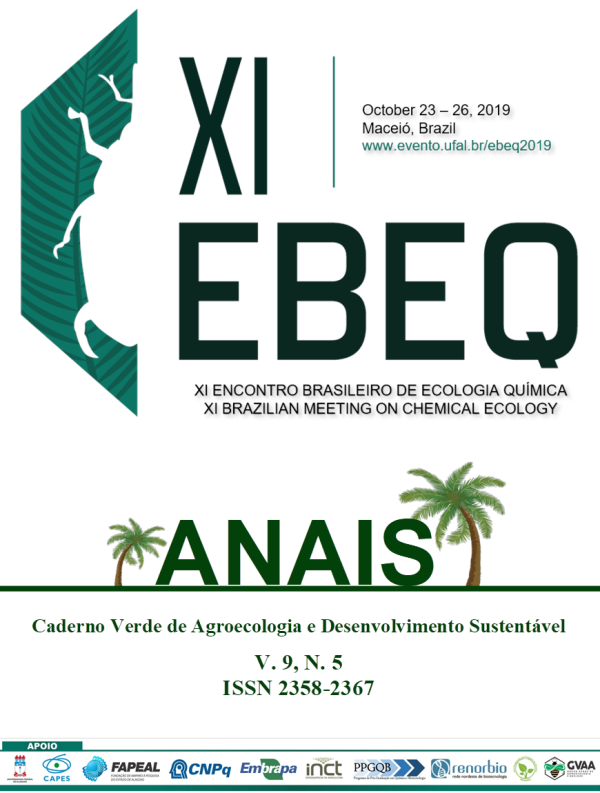SEMIOCHEMICALS – VERSATILE NATURAL VOLATILES
Palavras-chave:
CHEMICAL COMMUNICATION, BIOGENETIC ORIGIN, DIVERSITY, ANTIBIOTICS.Resumo
Organisms are permanently surrounded by scents, which are made up of a broad spectrum of secondary metabolites originating from the ubiquitous pathways of classical catabolism or metabolism. Some of these volatiles are meaningful to the receiver or important for the sender but some do not seem to be registered at all. However, no naturally occurring compound is “just there”. Any chemical signal needs a receptor at the receiver site – and it may be asked whether semiochemicals may also be recognized by proteins that are not primarily involved in chemical communication. Consequently, it would make sense to generally screen semiochemicals for biological activities apart from their presently known function. Methyl p-hydroxybenzoate, a component of the honey bee queen pheromone, exhibits strong antibiotic properties. Similarly, (3S,6E)-2,3-dihydrofarnesol, (terrestrol),is a marking pheromone of male bumble bees and its enantiomer, released by the yeast Candida albicans show strong antibiotic activity against various Dermatophytes And there are more examples that prove the physiological versatility of semiochemicals, which will be discussed in more detail. It would be interesting to investigate, whether two organisms reacting to the same volatile compound (e.g. bark beetles and hornets or elephants and moths or bumble bees and skin fungi) share the same receptor.Downloads
Publicado
Como Citar
Edição
Seção
Licença
Termo de cessão de direitos autorias
Esta é uma revista de acesso livre, em que, utiliza o termo de cessão seguindo a lei nº 9.610/1998, que altera, atualiza e consolida a legislação sobre direitos autorais no Brasil.
O(s) autor(es) doravante designado(s) CEDENTE, por meio desta, publica a OBRA no Caderno Verde de Agroecologia e Desenvolvimento Sustentável, representada pelo Grupo Verde de Agroecologia e Abelhas (GVAA), estabelecida na Rua Vicente Alves da Silva, 101, Bairro Petrópolis, Cidade de Pombal, Paraíba, Brasil. Caixa Postal 54 CEP 58840-000 doravante designada CESSIONÁRIA, nas condições descritas a seguir:
O CEDENTE declara que é (são) autor(es) e titular(es) da propriedade dos direitos autorais da OBRA submetida.
O CEDENTE declara que a OBRA não infringe direitos autorais e/ou outros direitos de propriedade de terceiros, que a divulgação de imagens (caso as mesmas existam) foi autorizada e que assume integral responsabilidade moral e/ou patrimonial, pelo seu conteúdo, perante terceiros.
O CEDENTE mantêm os direitos autorais e concedem à revista o direito de divulgação da OBRA, com o trabalho simultaneamente licenciado sob a Licença Creative Commons do tipo atribuição CC-BY.
O CEDENTE têm autorização para distribuição não-exclusiva da versão do trabalho publicada nesta revista.
O CEDENTE têm permissão e são estimulados a publicar e distribuir seu trabalho online (ex.: em repositórios institucionais ou na sua página pessoal) a qualquer ponto antes ou durante o processo editorial, já que isso pode gerar alterações produtivas, bem como aumentar o impacto e a citação do trabalho publicado.










